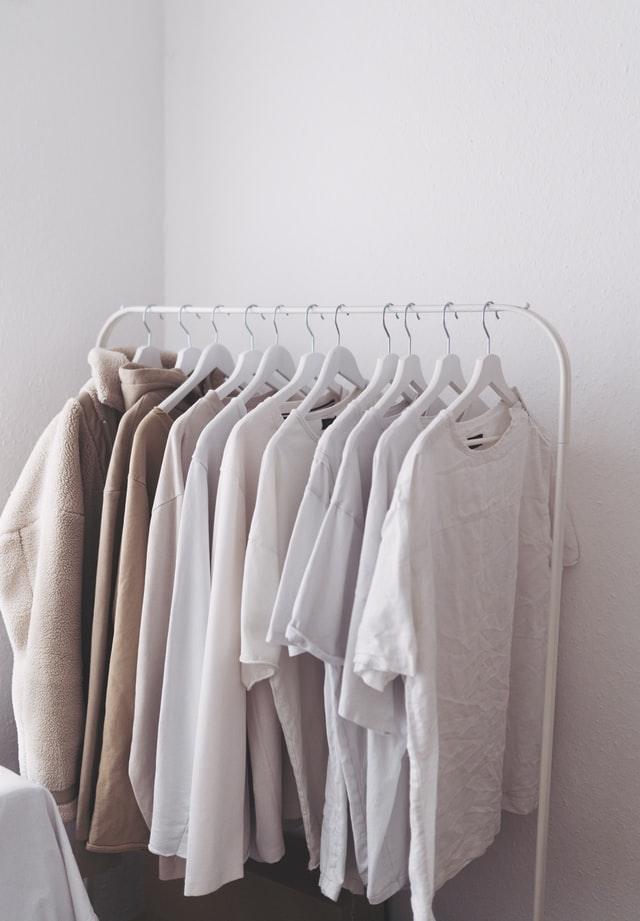In recent years a lot of us have become aware of the startling impact fashion has on the planet. To put it into context, the fashion industry emits about the same quantity of greenhouse gases per year as the economies of France, Germany, and the United Kingdom combined. The magnanimity of the issue can leave consumers feeling a little helpless, but more of us than ever are choosing to take small steps towards sustainable fashion, starting with our own habits.
We should all be embracing wardrobe sustainability, meaning choosing better fabrics (like organic or deadstock), ignoring trends in favour of trans-seasonal or timeless styles, and demanding better from brands (and a lot more besides). It’s a complex issue that can be incredibly daunting if you’re not sure where to start or you’ve become reliant on fast fashion. Below we’ve compiled eight easy tips to ease you into the sustainable fashion mindset - pick and choose what works for you, and remember that every small step counts:
How to introduce sustainable fashion to your wardrobe
1- Do your research
The best way to become more sustainable is to understand why you need to make the switch in the first place. From exploring the different ways the industry wreaks havoc on the environment to knowing what greenwashing is and how to spot it, taking some time to research the different areas of sustainable fashion can pay off in the long run.

2- Invest in the best
Sustainable fashion seems to come with a few caveats: it’s expensive, boring and exclusively made with dull, pastel colours. But that’s not the case at all.
Of course, sustainable fashion is not going to match the ridiculous fast-fashion prices because you’re paying for quality materials and living wages. But the trade-off for slightly higher prices is better quality clothes that outlast trends and are able to be re-worn again and again. Invest in your clothes and watch them pay for themselves by calculating cost-per-wear.
3- Wear, re-wear, and wear again
The old mantra ‘buy less, buy better’ rings true. When you spend more on a garment of better quality, it’s naturally going to last longer and become a staple in your wardrobe. Contrary to what social media wants you to believe, there’s nothing wrong with re-wearing something multiple times. By removing yourself from the five-minute trend cycle and paying attention to what you like, you can start to cultivate a personal style that stands the test of time.
4-Take care of your clothes
So many of us don’t bother checking clothing labels for washing instructions, and it can lead to some mistakes with our wardrobes (think your favourite t-shirt, shrunken and discoloured). Having a quick refresher of what each symbol means can help avoid future disasters and prolong the life of your clothes. The same can be said for using stain remover and clothing softener, as well as double-checking you’re washing clothes only when needed - quick changes can make all the difference.

5-Mend and upcycle where you can
Learning some simple mending techniques could infinitely improve the lifespan of your clothes. If you don’t have the time, patience or ability for mending clothes yourself, consider finding a good tailor - once again, it’s all about cost-per-wear and investing in your wardrobe. There’s also so many ways you can upcycle clothes once something is no longer working - from dyeing an old t-shirt to altering your favourite jeans. Here’s a little inspiration to get started.
6-Host a clothes swap, or attend a community event
Clothes swaps are the perfect way to shop sustainably whilst having fun with others - start by inviting your friends to bring a few garments they no longer wear and let the swapping commence! Alternatively, there’s more and more community events springing up organised by the sustainable fashion community. It can be a great way to explore new styles you might not otherwise choose and find pieces you’ll treasure forever.
7-Consume mindfully
Sustainability consultant Eco-Age advises asking yourself three things: “What are you buying and why? What do you really need? Will you wear it at least 30 times?” Practising slow fashion and embracing a different approach to shopping can work wonders for reducing your environmental impact. Simple acts like organising your wardrobe so you know what you already have, buying trans-seasonal clothing that you can re-wear year-round, or renting key pieces for special events can drastically decrease overconsumption and cultivate a new relationship with fashion.

8-Rethink your social media
One of the easiest ways to change your consumer mindset is to detox the people you follow on Instagram, TikTok and Youtube. We’re bombarded online with constant clothing hauls and the latest trends, and it only increases our temptation to keep buying fast fashion.
Whether you do a mass purge or simply unfollow accounts as you notice them, it can be a breath of fresh air to remove overconsumption from your screen. Why not follow some sustainable fashion influencers instead? We love @besmacc and @ajabarber.



